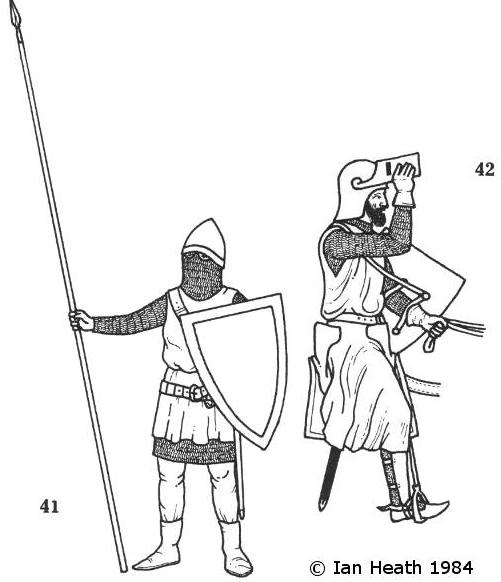
Create an Amazon Business Account
CILICIAN ARMENIAN MEN-AT-ARMS, 14th CENTURY
An extract from Armies of the Middle Ages, Volume 2by Ian Heath

| ||
| [Based on Soldiers in an Armenian Gospels of Cilician Armenia, 1320AD, Matenadaran Collection MS7651.] | ||


| ||
| [Based on Soldiers in an Armenian Gospels of Cilician Armenia, 1320AD, Matenadaran Collection MS7651.] | ||
41 & 42. CILICIAN ARMENIAN MEN-AT-ARMS, 14th CENTURY
Cypriot influence was extremely strong in 14th century Cilicia. King Hetoum (1294-1305) was particularly pro-Frankish and his sister was married to Aimery de Lusignan, the king of Cyprus’ brother, whose sons Bohemond and Jean later became count of Corycus and Cunstabl of Cilicia respectively, the latter even ruling the country briefly in 1341. When the last of Hetoum’s dynasty was murdered it was another Lusignan, King Hugh IV of Cyprus’ nephew Guy, who the Armenians chose to succeed him in 1342 as Constantine III. The very last king of Cilicia, Leon VI, was also a Lusignan. However, other than King Peter of Cyprus’ piratical crusading ventures of 1361 and 1367 against the Turkish-held Cilician ports of Antalya and Ayas (Chaucer’s Satalye and Lyeys), no material aid was received from the rest of Christendom, and the last remnants of the kingdom of Cilicia were finally extinguished by the Mamluks in 1375.
As explained under figures 16-18 in Armies and Enemies of the Crusades, French influence in arms and military organisation had come to predominate in the course of the 12th and 13th centuries, a trend which continued during this period, as witnessed by these figures. 41 comes from a Cilician ms. of c.1320, other mss. showing men-at-arms even more like Western European types though almost invariably depicting armour that was really 30 years or more out of date. Seemingly open helmets were the norm, and mostly straight swords were carried, though some are depicted very slightly curved like those of the Mongols (see, for instance, figure 147). Figure 42 comes from a French edition of 1375 of the ‘Fleur des Histoires de la Terre d’Orient’ by Hetoum, prince of Corycus, written in 1307. He wears a mail corselet, a light-coloured surcoat, leather gauntlets, a bascinet with movable visor, and greaves over red hose. Turkish costume and equipment was also popular by this time, as too had been that of the Mongols in the early part of the century. Native infantry would have continued to resemble figures 15 and 16 in Armies and Enemies of the Crusades, supplemented by Frankish foot-soldiers hired in Cyprus.